What does new EKOS poll mean for fall election in Canada?
Aug 5th, 2010 | By Citizen X | Category: In Brief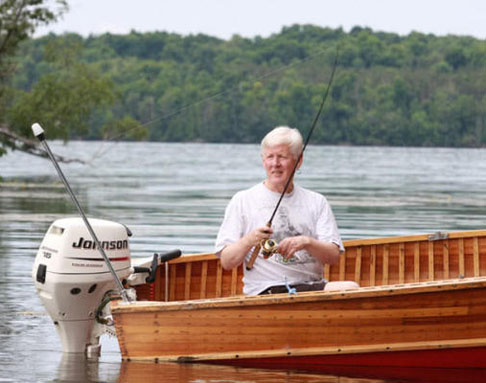
Former Ontario NDP premier and current federal Liberal MP Bob Rae has apparently gone fishin’ for the moment in this unusually hot northern summer. But he may still hold at least a few keys to the future in Canadian federal politics.
Two days ago NDP guru Brian Topp opined that there was only a 40% chance of a Canadian federal election this fall. Do the somewhat intriguing results of the latest EKOS poll, released today, suggest anything that might change this opinion?
The immediate shortest answer is probably no. Today’s EKOS results are not all that different from the “Harris-Decima poll, released on July 27,” on which Mr. Topp based his calculations.
According to Harris-Decima July 27, the Canada-wide popular vote would go 31% Conservatives, 26% Liberals, 18% NDP, 12% Green, and 10% Bloc Québécois (which converts to 41% in Quebec alone, the only province where the BQ runs candidates, of course). On the seat projection Brian Topp has used, this would give 120 Conservatives (in a House where 155 is a bare majority), 92 Liberals, 41 New Democrats, and 55 Bloc Québécois.
According to the new EKOS August 5 results, the Canada-wide popular vote (in comparable round numbers) would go 30% Conservatives, 29% Liberals, 17% NDP, 11% Green, and 10% Bloc Québécois. On EKOS’s own seat projections, this would give 115 Conservatives, 99 Liberals, 41 NDP, 50 Bloc Québécois, and 2 Green (both in Ontario).
In either case the Conservatives would still have the largest number of seats. In both cases, however, they would have considerably less than the 155 needed for a bare majority, and even than the 144 seats they hold right now.
Similarly, in both cases the Liberals and NDP together would have more seats than the Conservatives (133 on the Harris-Decima results, and 140 according to EKOS) – but also still less than a bare majority.
In either case as well a Liberal-NDP “coalition” government, as an alternative to a much slimmer Conservative minority government, would still depend on the Bloc Québécois (or the Conservatives themselves!) to pass legislation. (Brian Topp’s beloved “Liberal-NDP Accord” precedent of 1985 in Ontario provincial politics does not quite fit Canadian federal politics in 2010 – because there is no Bloc Québécois in Ontario provincial politics.)
At the same time, the August 5 EKOS poll numbers on voters’ “second choices” also cast some deep cold water on Mr. Topp’s latest speculations about “a new element in this calculus.” This, Mr. Topp suggests, would be driven by “the deep vein of loathing and fear that many in Michael Ignatieff’s Rosedale/Bay Street-centred blue Liberal faction hold for progressive policies and people.” And it could lead to “another informal modus vivendi” between “blue Liberals” and Harper Conservatives.
Yet as EKOS president Frank Graves underlines in his August 5 commentary, it is one of the Harper Conservatives’ key current problems that they are last on virtually everyone else’s list of second choices (and thus have less room to grow, etc, etc). The same numbers also suggest that an Ignatieff Liberal Party which flirts too much with any extended brand of Conservative-Liberal modus vivendi really will be signing its own death warrant.
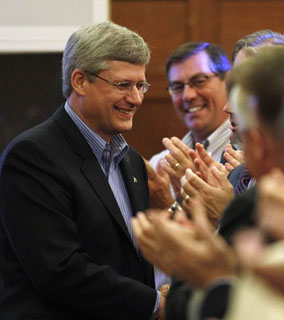
Canada's Prime Minister Stephen Harper greets members of the Conservative caucus during a meeting on Parliament Hill in Ottawa August 5, 2010.
So … unless either the Conservatives or the Liberals can somehow jump out of their current skins and win a majority of seats in the elected branch of the Ottawa parliament all by themselves, some version of a Liberal-NDP Accord, at least vaguely blessed by the Bloc Québécois, may still be the only way forward in Canadian federal politics, in the second decade of the 21st century.
It may even be, the current EKOS poll almost seems to imply, that the pressure to test this proposition is at last boiling and bubbling, to the point where there actually is a somewhat better than 40% chance of a federal election this fall?
(Even if both Mr. Harper and Mr. Ignatieff have just now told whoever is listening that they are just not interested in any such thing?)
APPENDIX: EKOS second choice numbers in detail (for incurable Canadian political junkies actually interested)
There is a side to the federal NDP that still thinks it can supplant the Liberals as the mainstream “progressive” party in Canada, and even soon enough. Brian Topp seems to me to at least wander often in this territory. And who knows? He may even be right.
Personally, I read Mr. Topp’s August 3 comments about “the deep vein of loathing and fear that many in Michael Ignatieff’s Rosedale/Bay Street-centred blue Liberal faction hold for progressive policies and people” in this context. To me at any rate, there is without doubt a side to the NDP that hates the business community. And there is a parallel side to the Liberals that hates the side of the NDP that hates the business community, etc. But when push finally comes to shove in the real world of politics all this is just a kindergarten pastime – on both sides.
The second-choice numbers in the August 5 EKOS poll help put the continuing case for some future federal “Liberal-NDP Accord” in some more neutral perspective – focused on the Canadian people who vote for the parties, and not just on the often fractious “elites” who try to run them. To start with, the Liberals and New Democrats are similar, in that about a quarter of their “first choice” supporters report “No second choice” (24.0% for the Liberals and an only slightly higher 26.5% for the NDP).
From here it is true enough that a somewhat greater percentage of Liberals than New Democrats (again, among ordinary voters) report Conservatives as their second choice (21.0% Liberals and 14.0% NDP). What is most striking here, however, is that this difference is not at all so great – especially in the context of the much larger percentages in each party which report the other party as second choice. (Ie, 35.9% of Liberals report NDP as their second choice, while 33.3% of New Democrats report Liberals as their second choice.)
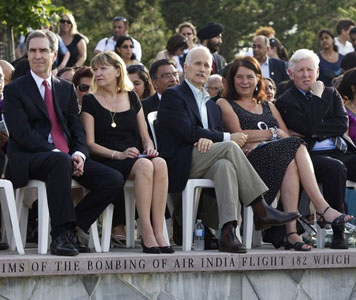
 Liberal leader Michael Ignatieff (L), New Democrat Party (NDP) leader Jack Layton (C), and Liberal Party MP Bob Rae (R) sit at 25th anniversary memorial gathering at the Air India monument in Toronto June 23, 2010.
You don’t have to be a political rocket scientist to appreciate how these numbers suggest seminal danger for a Liberal Party which grows too close to the Conservatives. Or how an NDP that has 14% of its supporters reporting Conservatives as second choice already lives in too much of a glass house to point too many accusing fingers at a Liberal Party that has 21% of its supporters reporting Conservatives as second choice.
Adding the Green Party – which has recently been showing almost surprisingly well in opinion polls across Canada – thickens this picture in a few more intriguing ways. Some 29.3% of Green Party first-choice supporters (a bit higher than either the Liberals or the NDP) report “No second choice.” Only 8.0% of Green Party supporters report Conservatives as second choice, compared with 28.1% Liberals and 22.9% NDP. From the other direction, 20.9% of NDP and 14.9% of Liberal first-choice supporters report the Greens as their second choice – an almost exact reversal of the numbers for second-choice Conservative supporters in the two groups.
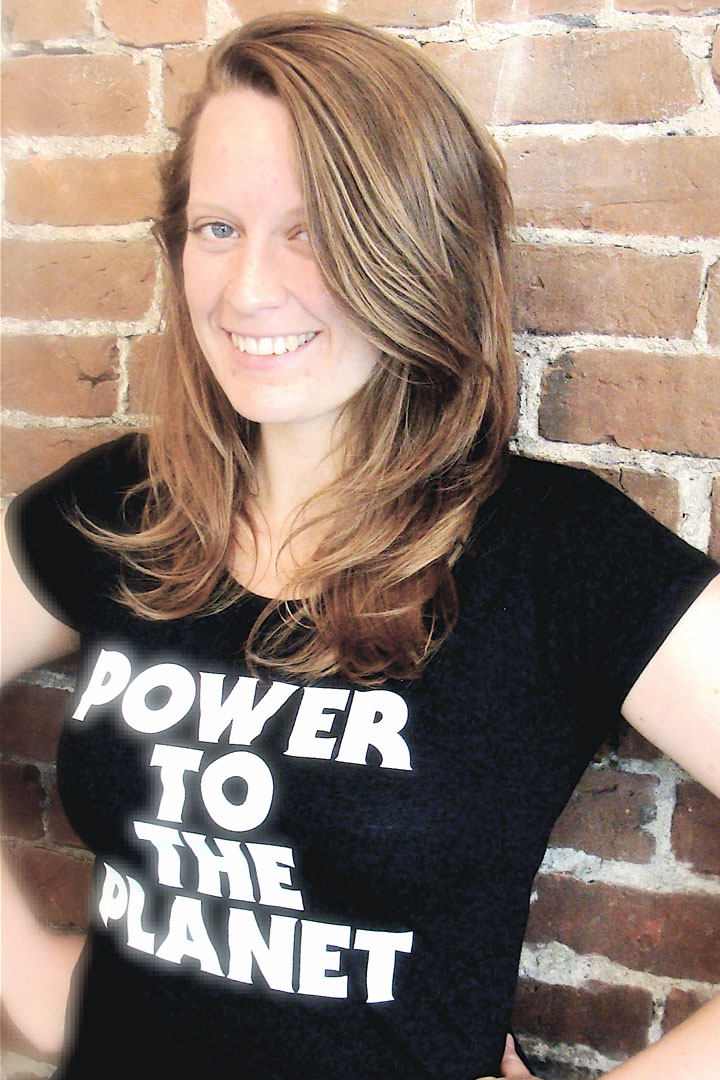
Green Party activists like this young Halifax lady are yet another new ingredient in Canadian federal politics. Where are we going – and who’s coming with us?
Finally, a quick note on the Conservatives and Bloc Québécois rounds the picture out. A bit surprisingly (to some at any rate?), only 30.1% of BQ first-choice supporters report “No second choice” – compared to a dramatically larger 46.1% for Conservative first-choice supporters. Almost half of Conservative first-choice supporters, that is to say, are not interested in any other party at all. This no doubt correlates well with the party’s current fund-raising prowess. But it probably also points to some of its increasing difficulties in governing a geographically sprawling political entity as diverse as the Canadian confederation of the early 21st century. More positively from this angle, 24.2% of Conservative first-choice supporters report the Liberals as second choice, 11.9% the Green Party, and 11.7% the NDP.
The Bloc Québécois second choices are of course intriguing in their own right: 27.7% NDP, 18.5% Green, 13.1% Liberal, and 10.2% Conservative. That almost 70% of Bloc Québécois voters are prepared to entertain second choices among so-called federalist parties also suggests something about the never-ending sovereigntist debate in la belle province today – and about the extent to which leaning on BQ support in the Canadian House of Commons does not logically entail any serious deficiency in Canadian patriotism.
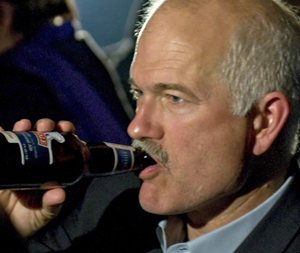


Very interesting column!